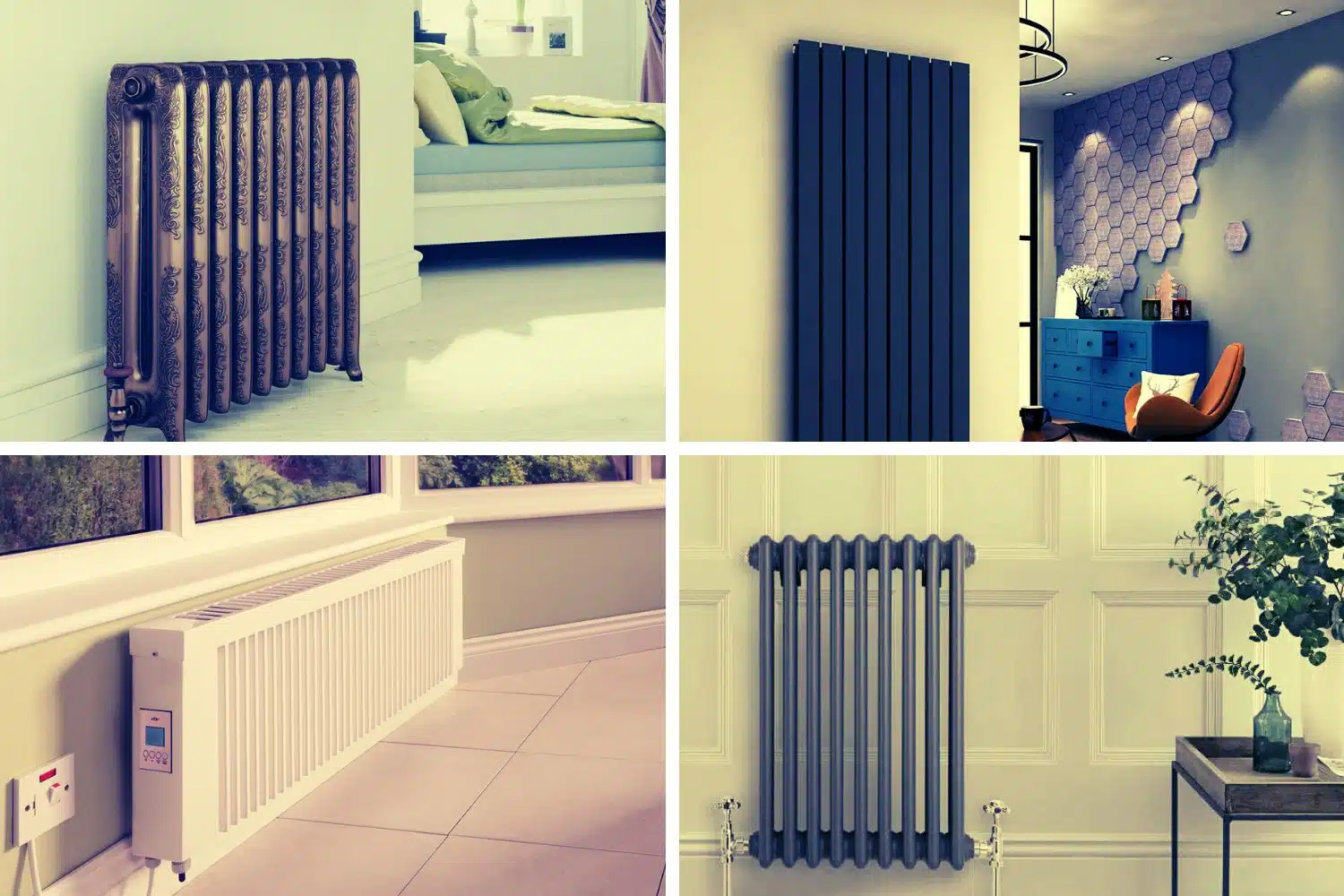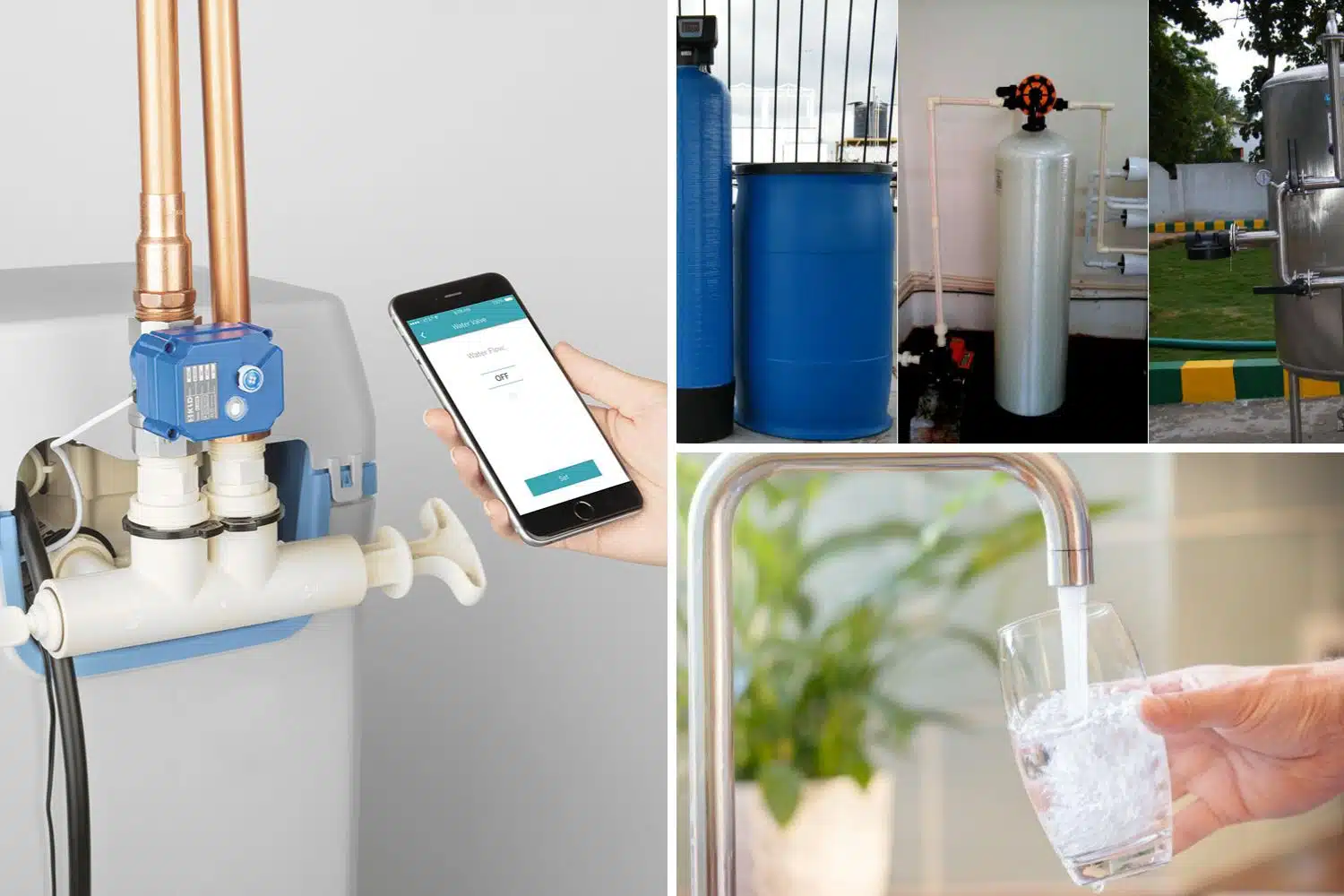Radiators to Consider – Most people in the United States and Europe are familiar with the standard radiator system.
Usually made of steel, these parts of a heating system are designed to prevent dampness from forming in the home, can help with keeping you and your family warm, and, of course, usually have a knob on the side that you can turn to control the temperature. Simple!
But, in the last few years, the heating systems in many homes have changed, and so have the radiators. Most homes are switching from a standard radiator system to a digital one or even options that can be controlled by their smartphones, known as smart heaters. And, of course, with the push for homes to become greener, there is more of an emphasis now on radiators to preserve heat, with many people setting their home heating system to a timer to prevent heat from being wasted in the home.
Alongside the change to the heating systems themselves comes the newer, broader range of designs that make up modern radiators, as well as the new range of materials that they are being made from. If you are looking for an easy option to change your current heating system to be greener, look more stylish, or simply be more cost-effective, read on to learn about the different kinds of radiators to consider that are available.
Conventional Steel Radiators
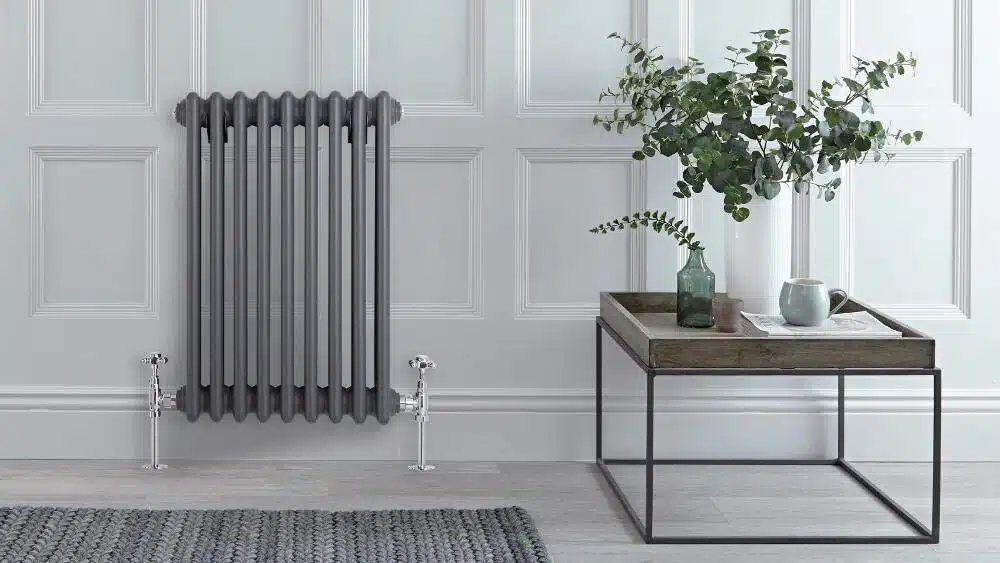
These Anthracite Grey Radiators are the most common type of radiator to consider and are made from steel. They are available in a wide range of sizes and shapes and are generally very durable.
This means that if you currently have a steel radiator, you can upgrade the design and the color while also staying with a system that you know.
Conventional steel radiators are relatively inexpensive compared to some other types of radiators. They are also readily available and can be purchased from most heating and plumbing supply stores.
As mentioned before, conventional steel radiators can be designed to be almost any shape, meaning that you will be likely to find one that will fit in any room. It’s also possible to paint them for better fitting in the room design.
Steel is also a good conductor of heat, so the heat from the hot water flowing inside the radiator is efficiently transferred to the room air, making it an efficient heating source.
These types of radiators are relatively easy to maintain, as they only require occasional cleaning to remove dust and debris. It is also easy to fix leaks and repair or replace them if it’s needed.
Steel radiators work well with a central heating system and can be adjusted to use less energy when not needed, helping to lower your energy bills. Great! So, head to warmrooms.co.uk to look for your newer, flashier steel radiator.
Cast Iron Radiators
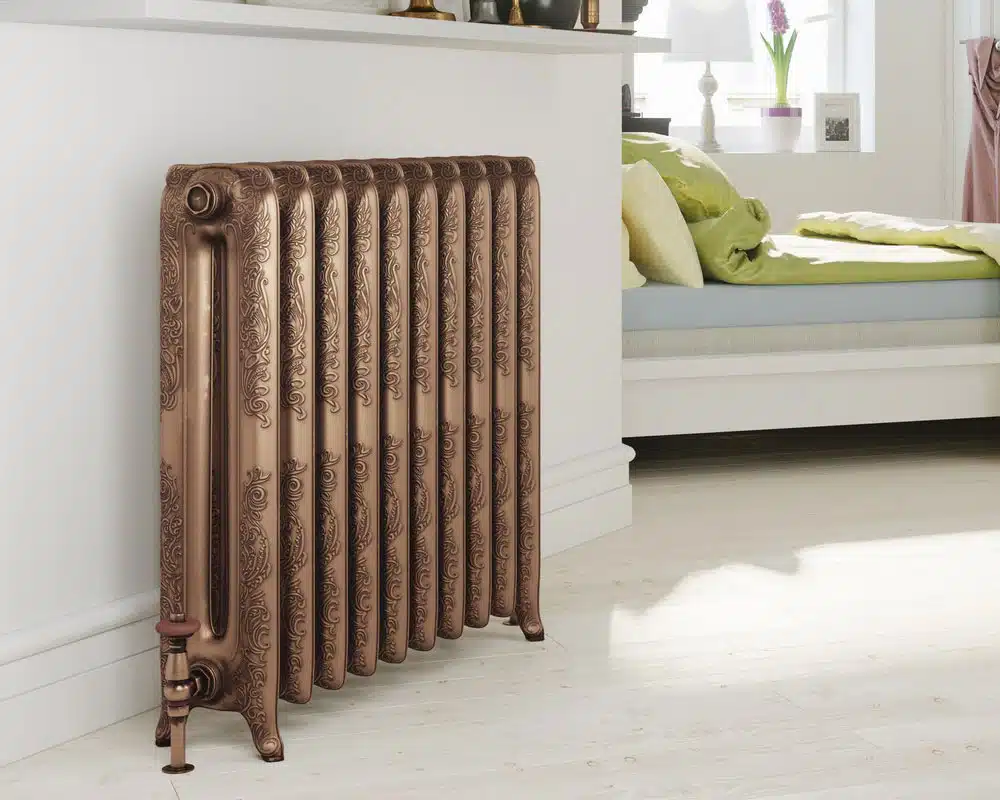
These radiators are made from molded cast iron and are known for their durability and longevity. They are also very heavy, which can make them difficult to install.
But cast-iron radiators retain heat longer than steel, aluminum, or panel radiators, and they provide a steady, radiant heat that is more comfortable than the convection heat of other types of radiators to consider.
Visually, these radiators have a classic, vintage look which can allow them to add a touch of elegance to any room, as they come in a variety of styles, designs, and finishes.
Cast iron radiators require relatively low maintenance, as they only need to be cleaned occasionally to remove dust and debris. They are also easy to fix leaks, repair, or replace if necessary.
These radiators have a higher water content than other types of radiators, which means they have a greater heating capacity. So, they can heat up a room or a large area faster and maintain heat for longer.
Aluminum Radiators
These radiators are lightweight and easy to install. They are also very efficient at transferring heat, which makes them a popular choice for many heating systems. Due to the high heat transfer rate and the fact that they are lightweight, aluminum radiators can operate at a lower temperature and consume less energy. This makes them more energy-efficient than other types of radiators.
Interestingly, they are resistant to corrosion and rust, which means they require relatively little maintenance. These radiators are slim and flat, making them perfect for tight spaces or rooms with limited wall space or if you want to add an interesting heating element to a room. They can be mounted to a wall or even built-in to save even more space. Aluminum radiators are generally more affordable than cast iron radiators while still providing good performance.
Panel Radiators to consider
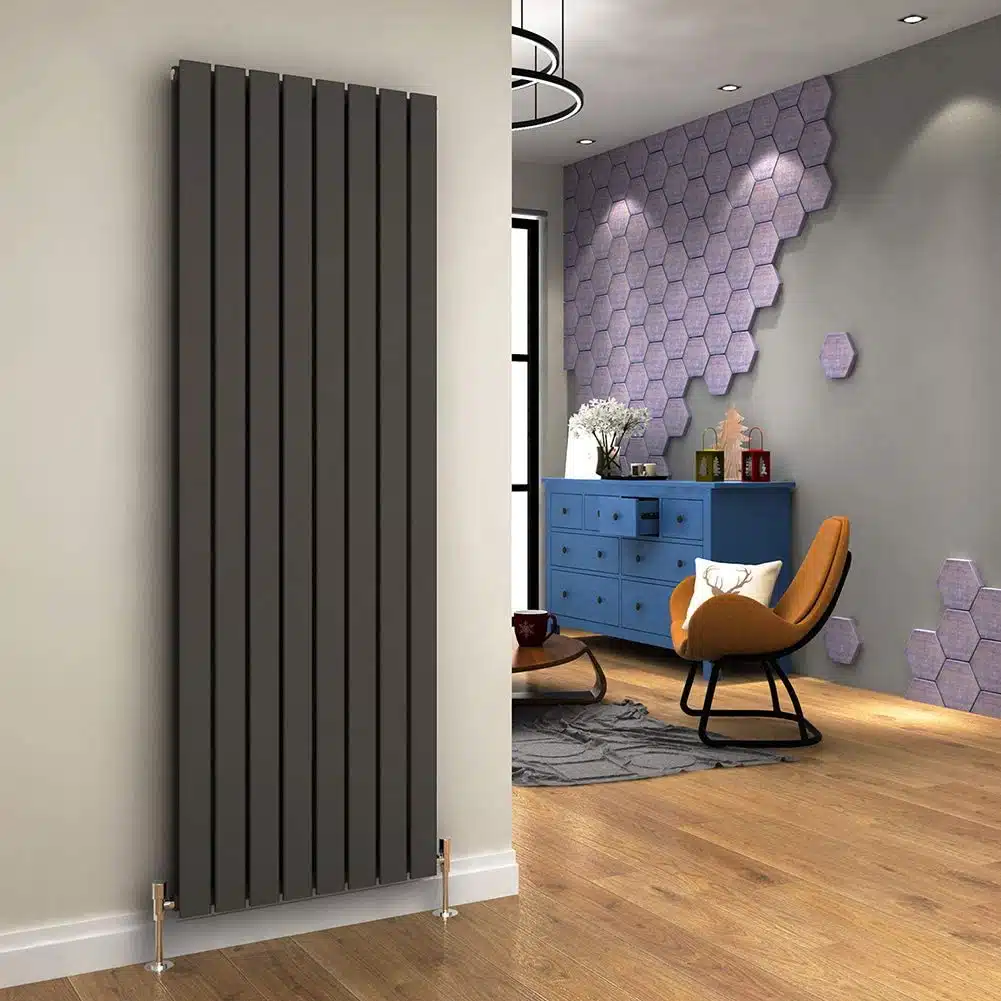
These radiators are slim and flat and often mounted on the wall. They are available in a wide range of sizes and styles and are perfect for spaces with limited wall space.
These radiators are slim and flat, making them perfect for tight spaces or rooms with limited wall space. They can also be mounted to any secure wall or even built-in to save even more space.
As you may have guessed, the flatter surface of these radiators makes them better at emitting heat than some other options, making them effective for homes that may have higher ceilings due to the wider dispersing of temperature.
Electric Radiators
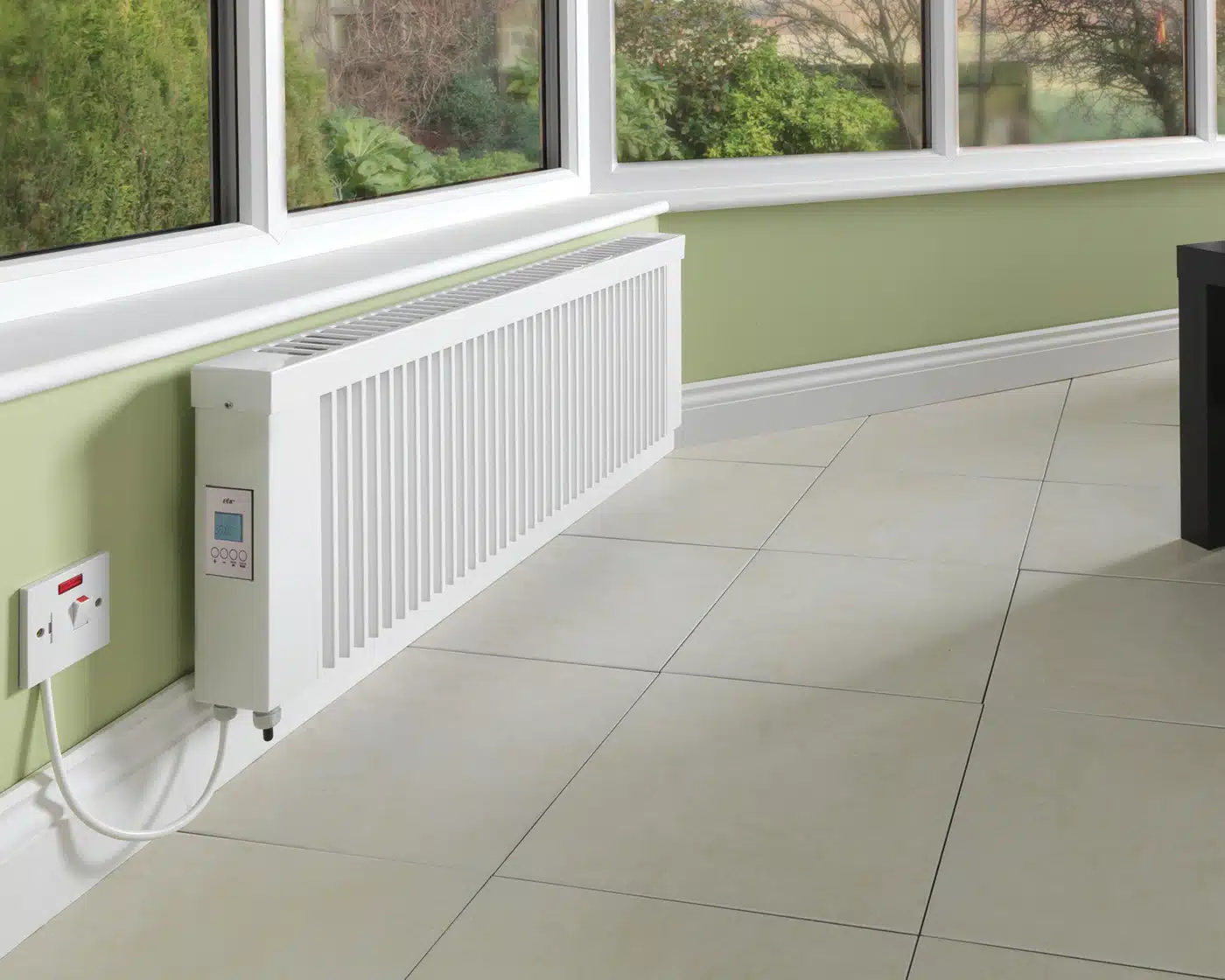
Electric radiators generate heat through an electric heating element, in a similar way to a kettle, only bigger! They are an alternative choice for central heating where a gas supply is not available. They do not require a flame or combustion and do not produce any emissions, so they are safer to use than gas or oil-based heating systems.
Many modern electric radiators come with energy-saving features such as timers, thermostats, and radiant heating. They can be adjusted to use less energy when not needed, helping to lower your energy bills. Electric radiators are also relatively low maintenance and are easy to clean, as there is no need to worry about the servicing of the burner or the furnace, making them ideal for more modern homes. They are also more suitable for linking to a smart meter or smartphone to program when you want them to come on.
